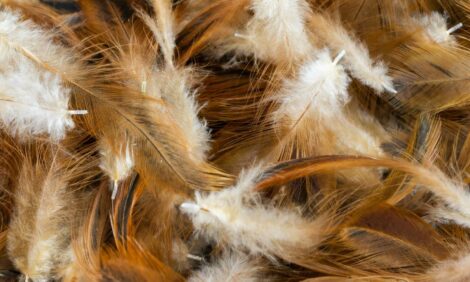



Putting incubation research into hatchery practice
On July 1, global poultry breeding company Aviagen hosted a webinar aimed at helping customers from Latin America to improve incubation performance. During the online session, Global Manager of Hatchery Development and Support and Incubation Specialist Dr. Dinah Nicholson shared her knowledge of best incubation practices, and how they are built on incubation research and developments from centuries ago to modern times. This article summarizes Dr. Nicholson’s discussions and shares insights on the history, present time and future of incubation practice to help ensure the best conditions to give day-old chicks a strong start to life.
"Our highest priority is the health and well-being of chicks and the success of our customers, so they can be effective in feeding their communities with a sustainable and quality protein source to provide #foodoneverytable,” explained Dr Nicholson. “Ideal incubation improves hatchability and forms a basis for the development of healthy and robust chicks.”
Egg incubation – an ancient science
The first archeological evidence of chickens living with humans is in China, and dates back over 7,000 years. Selection for many purposes ranging from cock fighting to decoration resulted in a huge range of types and sizes of chicken, from the Malaysian Serama (adult weight 500g) to the 6kg Jersey Giant. It is striking that, despite this huge range in mature size, the embryos still take 21 days to hatch, meeting all their developmental markers at the same times that would be expected of the ancestral Jungle fowl and modern commercial broiler lines.
Human-aided incubation was known about 2,400 or more years ago – in very different forms in Egypt and in China. Operating without thermometers, thermostats or forced ventilation, eggs incubated in the Egyptian system hatched about 15 percent below current standards, with slightly worse chick livability. Both systems are still in use today.
The opportunity to watch and measure developing embryos in their own self-contained incubation chamber seems to have stimulated research not only into embryology, but also into some of the environmental control systems needed to make the process more reliable. The first research reports date back as early as the 17th Century, with Cornelius van Drebbel credited for designing an incubator in 1609, which contained one of the first recorded thermostats. The machine worked, although hatch rates were not recorded.
The Poultry Science Association was founded in the USA in 1908, with the journal starting publication in 1914. Incubation trials were included right from the start of publication. Similar associations and journals started in Europe and in Brazil as their industries developed. Many of the reports on incubation and hatcheries from the first half of the 20th Century are still relevant and valuable today.
Implementing the research – from Lab to Hatchery
It can take a very long time for techniques developed on a small scale in a laboratory to be widely used in commercial hatcheries. This is often because the researcher implemented or defined the treatments in a way that was not easy to transfer. The one piece of equipment which has made a significant difference to our ability to measure and interpret what actually happened during any treatment, and then to transfer that treatment from a table top or hobby incubator to a larger scale, is the modern data logger. In the 1980s these were the size of a breeze block, were programmed in Machine code, needed a power supply and trailed wires everywhere. Now, we use units the size of a film canister which are easy to program, and can be networked using a radio or wifi signal to give live feedback on what is happening in a working incubator. Using probes that can be attached to the egg shell surface allows us to estimate the temperature of the embryo, rather than that of the air around it. Research in the Netherlands by Sander Lourens in the early 2000s showed that hatch and chick quality are both maximized at a constant egg shell temperature (EST) of 100oF (37.8oC). He published 100 years after Bohr and Hasselbalch (1900-1903) who showed that embryo heat output increases as the embryo grows, and 65 years after Barrot (1937) who defined optima for temperature, humidity, oxygen and CO2. The target temperature published in 1937 was not far out, but today’s incubator manufacturers are a lot better at making sure that the machine does not have too many hot and cold spots, and todays incubationists know that the target must be met all the way through incubation.
Dr Nicholson explains the Aviagen trials work. “When Aviagen started to investigate the optimal parameters for SPIDES (Short Periods of Incubation During Egg Storage) in 2009, we were able to use this improved understanding of how temperature is relevant to the embryo and how best to assess it in the commercial incubators we used for the trials. The earliest paper describing the effect of heating hatching eggs during storage was published in 1912, so the time lag from first experiment was very similar to that for temperature responses. We were very fortunate to have Steve Tullett, Nick French and Murray Bakst on the project;with their deep knowledge of incubation and the support of many Aviagen hatchery managers contributing their practical hatchery management skills.”
“Incubation research has been contributing to human-assisted incubation for more than 400 years. As we learn more about biology and the tools become more sensitive, we can measure and control more accurately. The only thing we can really say today is: there is still a lot to do,” concluded Dr Nicholson.










